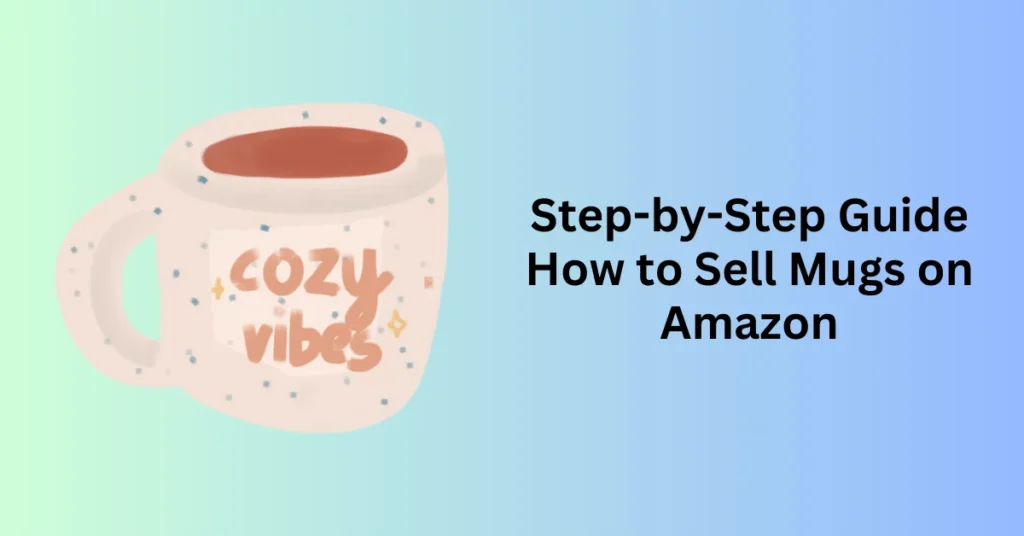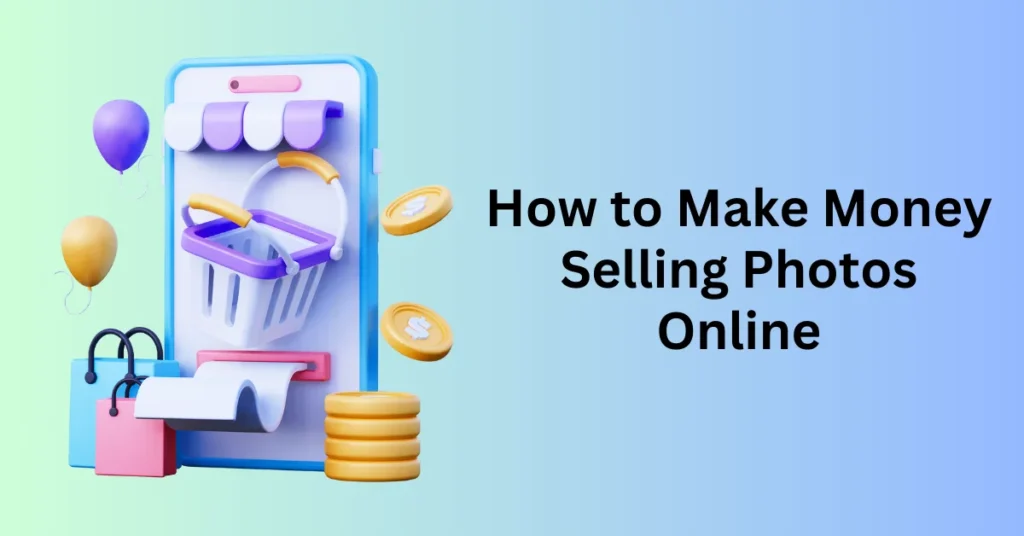Selling mugs on Amazon is a great way to tap into the lucrative home decor market, which is a rapidly growing segment. With home and DIY products accounting for 10% of Amazon’s total sales and ranking as the fourth most popular category, mugs are a profitable product to consider.
Whether you’re a new seller or expanding an existing business, this guide will walk you through the entire process—from defining your audience to setting competitive prices and optimizing your product listings.
Start Your Custom Mugs Business with free Printify account Today
How to Launch Your Amazon Mugs Business?
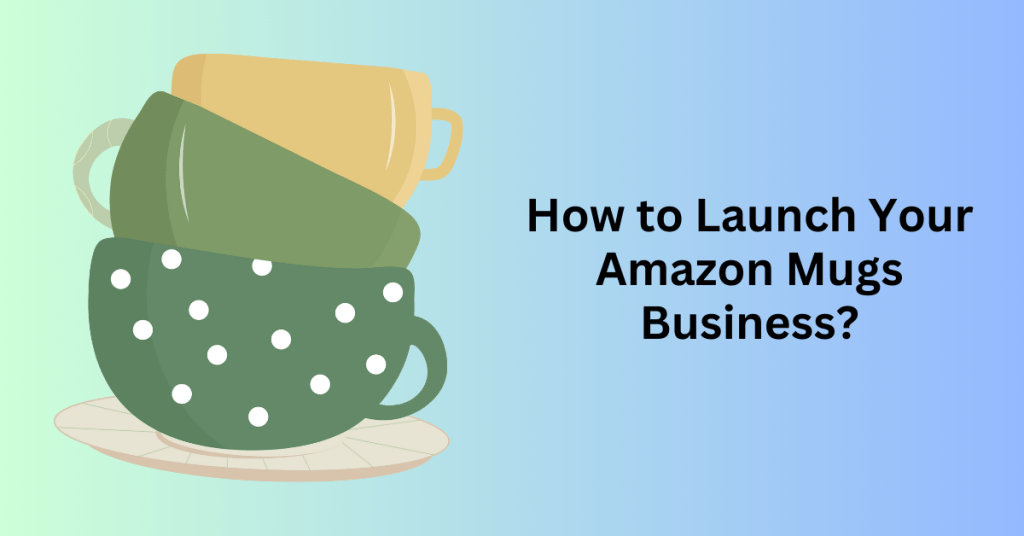
Thinking about turning your creative mug designs into a profitable online business? Let’s get started!
Identify the Ideal Customers for Your Amazon Mugs Business
Before you start designing and listing your mugs, it’s crucial to define your target audience. Your ideal buyers—often referred to as your niche—are the group of people most likely to resonate with your designs. These individuals share specific characteristics such as age, interests, profession, and shopping habits.
For example, you might create witty, academic-themed mugs tailored for college students or office-inspired designs featuring humorous workplace slogans that appeal to professionals. The more specific your niche, the easier it will be to attract and retain loyal customers. Generic designs can easily get lost in Amazon’s massive marketplace, so focus on a unique angle that sets your brand apart.
Conduct Market Research
Understanding the market will give you a competitive advantage and help you create products that customers genuinely want. Here’s how to conduct thorough research:
- Track Industry Trends: To stay ahead of the curve, use Google Trends to analyze search interest in various mug designs and themes. Additionally, explore Amazon’s Best Sellers and Trending Now categories to get a sense of what’s currently in high demand.
- Evaluate Competitors: Take the time to study top mug sellers on platforms like Amazon, Etsy, and social media. As you do so, pay close attention to their design styles, pricing strategies, and customer feedback. By identifying gaps in the market, you can then position your mugs more effectively and, as a result, stand out from the competition.
- Leverage Research Tools: Use platforms such as Jungle Scout for insights into keyword trends, top-selling products, and customer demographics. In addition, Statista provides broader data on consumer preferences and purchasing behavior, helping you make informed decisions.
- Identify Pain Points: Start by diving into customer reviews on competing mug listings to uncover common complaints. For instance, are buyers frustrated with issues such as poor durability, fading prints, or uncomfortable handles? By addressing these pain points in your own designs, you can not only resolve these concerns but also gain a competitive edge, ultimately attracting more satisfied customers.
Choosing the Right Fulfillment Method for Your Amazon Mugs Business
One of the most important decisions you’ll make when selling mugs on Amazon is choosing the right fulfillment method. This decision plays a crucial role in how your products are produced, stored, packaged, and shipped, which in turn directly impacts delivery times, product quality, and customer satisfaction. By carefully considering your options, you can ensure a smoother process that meets both your business needs and your customers’ expectations.
Let’s explore two popular fulfillment methods for mug sellers: Print on Demand (POD) and Dropshipping.
Using Print on Demand (POD) Model for Your Amazon Mugs Business
Print-on-demand allows you to sell mugs with custom designs without having to buy or store inventory. Instead, a third-party service like Printify prints and ships each mug only after an order is placed. This business model makes it easy to launch and scale your store without the risks of bulk purchasing.
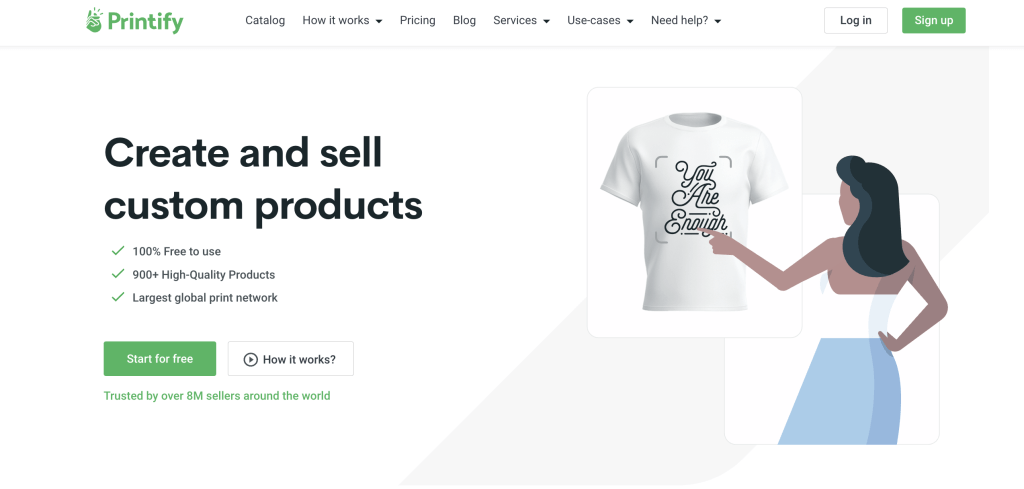
Pros of POD:
- No upfront inventory costs – You only pay for production after making a sale, reducing financial risks.
- Unlimited creative freedom – Easily test and launch new mug designs without the worry of unsold stock.
- Hands-off logistics – The POD provider handles production and shipping, so you can focus on marketing and customer engagement.
Cons of POD:
- Higher cost per unit – Since each mug is printed individually, per-unit costs are higher than bulk manufacturing.
- Longer shipping times – Production begins after the order is placed, which may result in slower delivery compared to pre-stocked items.
POD is an excellent choice for creatives and entrepreneurs who want to sell unique, custom-designed mugs without the hassle of inventory management.
Dropshipping Model for Your Amazon Mugs Business
Dropshipping is another hands-off fulfillment method where you sell products that are already manufactured, and a supplier handles inventory and shipping. However, unlike POD, you typically cannot customize these mugs with your own designs.
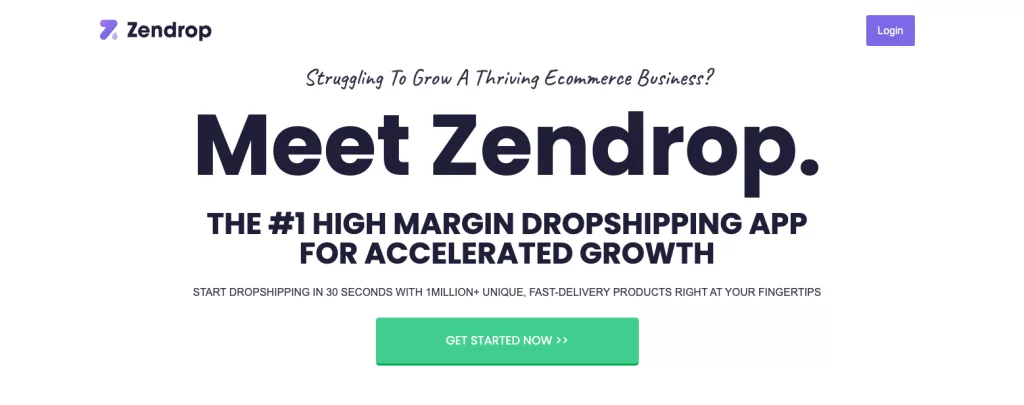
Pros of Dropshipping:
- Low startup costs – No need to buy and store products upfront, making it accessible for beginners.
- Wide product selection – You can offer a variety of pre-made mug styles and designs.
- Minimal operational work – Your supplier takes care of packaging and shipping, allowing you to focus on sales and marketing.
Cons of Dropshipping:
- Limited control over product quality – Since you rely on a third-party supplier, you may encounter quality inconsistencies.
- Highly competitive – Selling generic, non-customized products means you’ll face stiff competition.
- Variable shipping speeds – If your supplier is overseas, shipping times may be longer, leading to customer dissatisfaction.
Dropshipping is best suited for sellers who want to test different products with minimal investment but are not focused on offering unique, personalized designs.
If you want to build a custom brand and sell unique designs, Print on Demand is the better option. However, if you prefer selling pre-made mugs with minimal effort and startup costs, Dropshipping may be a better fit.
Either way, both methods allow you to start selling mugs on Amazon without handling inventory yourself—making them ideal for entrepreneurs looking to launch a business with low overhead.
Creating Standout Mug Designs with Printify
Bringing your mug designs to life has never been easier, thanks to Printify’s print-on-demand platform. Whether you’re aiming for trendy, humorous, or artistic designs, Printify allows you to experiment with different styles and cater to a variety of customers—without the hassle of inventory management.
Step-by-Step Guide to Designing Mugs with Printify
1. Sign Up for a Free Account: Start by creating a free Printify account to access a wide selection of customizable mugs. This gives you access to a marketplace of trusted printing partners and a variety of high-quality products.
2. Choose the Right Mug Style: Printify offers a diverse selection of mug types, so you can pick the best one for your brand and audience. Some popular options include:
- Classic Ceramic Mugs – Perfect for everyday use and the most common choice for coffee and tea lovers.
- Color-Changing Mugs – Heat-sensitive mugs that reveal designs when filled with hot liquid—great for novelty gifts.
- Travel Mugs – Designed for people on the go, offering spill-resistant lids and insulated materials.
Selecting the right mug type ensures that your designs align with both functionality and customer preferences.
3. Create & Customize Your Design: Use Printify’s easy-to-use Product Creator to apply your unique designs. Whether you’re working with illustrations, patterns, typography, or brand logos, the platform allows you to:
- Upload your artwork in high resolution
- Adjust placement and sizing for the perfect look
- Add text, graphics, or branding elements
4. Preview & Perfect Your Mockups: After finalizing your design, Printify automatically generates professional mockups that showcase your product from multiple angles. These high-quality images are not only ideal for your Amazon listings but also help you create a polished and visually appealing storefront.
Moreover, designing mugs with Printify is a seamless process, whether you’re launching your first collection or expanding an existing product line. With a variety of mug styles, customization tools, and real-time mockup previews, you can confidently create and sell unique, high-demand mugs on Amazon!
Start Your Custom Mugs Business with free Printify account Today
Setting Up Your Amazon Seller Account
Once your mug designs are finalized and ready for production, the next step is to establish your Amazon seller account. This will allow you to sell your products consistently while tapping into Amazon’s massive customer base.
Choose the Right Selling Plan
Amazon offers two main selling plans, and selecting the right one depends on your expected sales volume and business goals:
- Individual Plan – Ideal for beginners or those expecting fewer than 40 sales per month. This plan has no monthly subscription fee, but Amazon charges $0.99 per item sold. It’s a great option if you want to test the market without committing to ongoing costs.
- Professional Plan – Designed for sellers who anticipate higher sales or already operate an established business. This plan costs $39.99 per month and provides valuable perks, including access to Amazon advertising tools, bulk listing capabilities, advanced sales reports, and the ability to qualify for the coveted Amazon Buy Box.
Register Your Seller Account
To get started, go to Amazon Seller Central and sign up. You’ll need to provide essential business details, including your name, address, contact information, and tax details.
Amazon requires identity verification to ensure a secure marketplace. Be prepared to submit the following documents:
- A government-issued ID (such as a passport or driver’s license)
- Bank statements or utility bills to verify your address
- Business registration details (if applicable)
Amazon will review your documents, and once approved, your account will be activated.
Set Up Payment and Banking Information
To receive payouts from Amazon, you must enter your banking details. Amazon processes transactions and deposits earnings directly into your account at scheduled intervals.
Connect Printify to Amazon for Seamless Fulfillment
If you’re using Printify to produce and ship your mugs, integrating it with Amazon can streamline your workflow. This connection allows for automatic product listing creation and order fulfillment, eliminating the need for manual processing. Simply follow Printify’s integration guide to sync your designs with your Amazon store.
Optimizing Your Amazon Listings for Maximum Sales
A well-crafted product listing improves visibility in search results and boosts conversions. Here’s how to create high-quality listings that attract buyers:
1. Write an SEO-Optimized Product Title
Your title should be clear, descriptive, and keyword-rich to improve search rankings. Use relevant terms like:
- “Personalized Coffee Mug – Custom Name Mug for Coffee & Tea Lovers”
- “Funny Quote Mug – Gift for Work, Office, or Home”
Consider using keyword research tools like Helium 10 or Jungle Scout to identify high-performing keywords.
2. Craft a Persuasive Product Description
Your product description should highlight key features and benefits while addressing common customer concerns. Use compelling language to showcase:
- The mug’s material (e.g., ceramic, stainless steel)
- Durability (dishwasher and microwave safe)
- Printing method (fade-resistant, high-quality ink)
- Ideal uses (perfect for gifting, office, home, or travel)
3. Use High-Quality Images
Images are one of the biggest factors in a customer’s buying decision. Follow these guidelines to create engaging visuals:
- Upload multiple images showing different angles and use cases
- Use a white background for the main product image (Amazon’s requirement)
- Include lifestyle images to show the mug in real-life scenarios (e.g., someone enjoying coffee at work)
- Ensure images are high resolution (at least 1000 x 1000 pixels) for zoom functionality
4. Format Bullet Points for Quick Readability
Most shoppers skim product details, so clear and concise bullet points help communicate essential information at a glance. Focus on:
- Material and size (e.g., “11oz & 15oz ceramic mug”)
- Design features (“Vibrant, fade-resistant print”)
- Ideal gifting occasions (“Great for birthdays, holidays, or coworkers”)
5. Utilize Backend Keywords for Additional Visibility
Amazon allows you to add hidden search terms in the backend of Seller Central. These won’t be visible to customers but will help your listing appear in more searches. Include variations like:
- “Custom coffee mugs”
- “Black ceramic mug”
- “Personalized tea cup”
- “Gift for coffee lovers”
By following these steps, you’ll create a highly optimized Amazon listing that ranks well in search results and converts more shoppers into buyers.
Developing a Competitive Pricing Strategy for Your Amazon Mugs
Pricing plays a crucial role in attracting buyers and staying competitive in Amazon’s marketplace. A well-planned pricing strategy ensures that your coffee mugs remain appealing to shoppers while maintaining healthy profit margins.
1. Research Competitor Pricing
Before setting your prices, analyze the competition. Tools like Jungle Scout and Keepa help track competitor pricing trends, sales volume, and historical price fluctuations. Look for patterns such as:
- The average price range for similar custom mugs
- How competitors adjust prices during holidays or sales events
- Whether competitors use bundles or multi-item discounts
By understanding the pricing landscape, you can position your mugs strategically—whether by undercutting competitors, matching premium brands, or offering better value through packaging or customization.
2. Utilize Automated Repricing Tools
Amazon’s marketplace is highly dynamic, with prices shifting frequently due to competitor changes and demand fluctuations. To stay competitive:
- Use Amazon’s Automated Pricing Tool to adjust your prices in real-time without manual monitoring.
- Consider third-party repricing tools like RepricerExpress or Bqool for more advanced strategies, such as undercutting competitors while maintaining a profit threshold.
Automating price adjustments ensures your listings remain competitive without requiring constant manual input.
3. Factor in Amazon’s Fees and Costs
Profitability isn’t just about setting a competitive price—it’s also about understanding Amazon’s fees. When determining your pricing structure, account for:
- Referral fees (typically 8-15% per sale, depending on category)
- Fulfillment fees if using Fulfillment by Amazon (FBA)
- Shipping costs if fulfilling orders yourself (FBM)
- Production costs (especially if using Printify for print-on-demand services)
Use Amazon’s FBA Revenue Calculator to estimate the total costs and set a price that ensures a sustainable profit margin.
4. Experiment with Discounts and Promotions
Strategic discounts can increase sales volume and improve visibility on Amazon. Take advantage of:
- Coupons: Display a small discount tag next to your listing to attract budget-conscious shoppers.
- Lightning Deals: Temporary promotions that boost product exposure.
- Buy One, Get One (BOGO): Encourages bulk purchases, increasing your average order value.
- Subscribe & Save: Offer discounts for recurring purchases to lock in long-term customers.
Running occasional promotions helps boost rankings, attract bargain hunters, and increase conversion rates, especially during peak shopping seasons like Black Friday or Prime Day.
Analyzing Performance to Optimize Your Amazon Store
Once your Amazon store is up and running, regularly reviewing performance metrics is essential for sustained growth and profitability. By leveraging Amazon’s built-in analytics tools, monitoring customer feedback, and fine-tuning your advertising strategy, you can continuously improve your sales performance.
1. Track Key Metrics Using Amazon Business Analytics
Amazon provides a wealth of data to help sellers understand what’s working and what needs improvement. Amazon Business Analytics offers insights into:
- Sales performance – Track revenue, best-selling products, and seasonal trends.
- Traffic metrics – Monitor page views, sessions, and the number of unique visitors to your product listings.
- Conversion rates – Identify how many visitors turn into buyers and adjust listings if needed.
Regularly checking these reports in Amazon Seller Central (Business Reports section) allows you to make data-driven decisions that enhance your store’s profitability.
2. Monitor Customer Reviews and Feedback
Customer feedback is one of the most valuable sources of business insights. Keep an eye on:
- Product reviews – Identify trends in customer satisfaction and areas where your mugs could improve (e.g., design durability, packaging, or customization options).
- Q&A section – Answer customer questions promptly to improve engagement and build credibility.
- Negative feedback resolution – Responding to concerns professionally can enhance your brand reputation and potentially turn dissatisfied buyers into loyal customers.
3. Analyze Amazon Advertising Performance
If you’re running ads, regularly assess your Amazon Advertising dashboard to determine:
- Which ads are driving the most conversions
- Whether your ad spend aligns with your profit margins
- Which keywords are performing best (and which need to be adjusted)
Optimize ad bids – Increase bids on high-converting keywords and reduce spending on underperforming ones.
Refine targeting – Test different audience segments and ad formats (e.g., Sponsored Products vs. Sponsored Brands).
A/B test creatives – Experiment with different product images, titles, and descriptions to improve click-through rates.
By continuously monitoring your sales data, customer feedback, and advertising metrics, you can fine-tune your strategy to maximize sales, visibility, and long-term success on Amazon.
5 Proven Tips for Successfully Selling Mugs on Amazon
Selling coffee mugs on Amazon requires more than just listing a product—you need a strategic approach to stand out, attract customers, and generate consistent sales. Here are five key strategies to help your store grow and thrive.
1. Build a Strong Brand Identity
A recognizable brand helps customers remember your products and fosters long-term loyalty. To establish a strong brand presence:
- Develop a unique brand name, logo, and colour scheme that reflects your niche (e.g., minimalist, inspirational, or funny mugs).
- Craft a compelling brand story that resonates with your audience—whether it’s eco-friendly mugs, artist-designed prints, or personalized drinkware.
- Maintain a consistent tone and style across your listings, storefront, and social media to reinforce your brand identity.
Pro Tip: Register for Amazon Brand Registry to protect your brand and unlock additional marketing tools like A+ Content and Sponsored Brands ads.
2. Use High-Quality Photos & Engaging Descriptions
Your product images and descriptions directly influence buying decisions, so make them as appealing as possible:
- Use professional, well-lit images that showcase your mugs from multiple angles. Include lifestyle photos of people using your products to create an emotional connection.
- Write detailed, benefit-driven descriptions that highlight unique selling points, such as:
- Microwave & dishwasher-safe
- High-quality ceramic
- Perfect for gifting (birthdays, holidays, etc.)
- Include bullet points to make key details easy to scan.
Pro Tip: Test different images and descriptions over time to see which ones drive the most conversions.
3. Optimize Listings for Maximum Visibility
Amazon is a search-driven marketplace, so SEO (search engine optimization) is essential for getting your mugs seen by potential buyers.
- Research and include relevant keywords in your product title, description, and backend search terms (e.g., “personalized coffee mug,” “funny gift for coworkers,” “custom printed drinkware”).
- Use tools like Helium 10 or Jungle Scout to find high-traffic, low-competition keywords to boost your rankings.
- Optimize your Amazon store’s branding and categories to help customers navigate your product offerings easily.
Pro Tip: A/B test different titles and keyword placements to see what improves visibility and sales.
4. Offer High-Quality Mugs & Reliable Fulfillment
The quality of your mugs directly impacts customer satisfaction, reviews, and return rates.
- Choose durable, high-quality mugs that customers will love. Printify offers a variety of customizable ceramic and travel mugs that meet high standards.
- If using Fulfillment by Amazon (FBA), ensure your stock levels are well-managed to avoid running out of inventory.
- For Fulfillment by Merchant (FBM), work with reliable print-on-demand suppliers to ensure timely production and shipping.
Pro Tip: Ordering test samples before selling allows you to check print quality, packaging, and durability firsthand.
5. Engage & Communicate with Customers
Building customer relationships leads to repeat purchases, positive reviews, and word-of-mouth marketing.
- Respond to questions and reviews quickly and professionally.
- Follow up with buyers via Amazon’s messaging system to thank them for their purchase or offer support if needed.
- Offer occasional discounts, special promotions, or personalized thank-you notes to make customers feel valued.
Pro Tip: Encourage satisfied customers to leave reviews, as positive feedback boosts credibility and conversions.
Final Thoughts: Step-by-Step Guide How to Sell Mugs on Amazon
Launching your custom mugs on Amazon presents an exciting opportunity to build a profitable business. By focusing on key strategies such as identifying your target audience, staying on top of market trends, selecting the right fulfillment method, and optimizing your product listings, you can create a successful store that not only attracts but also retains loyal customers.
Additionally, the Print-on-Demand (POD) model makes it easier than ever to get started with minimal upfront costs, giving you the flexibility to scale your business efficiently. By consistently delivering high-quality products, engaging with your audience, and refining your strategies, you can establish a thriving brand on Amazon.
Whether you’re just starting or looking to improve your existing store, keep in mind that success on Amazon is built on strategy, consistency, and a customer-centric approach. Therefore, continue testing, optimizing, and engaging with your audience to elevate your custom mugs business to the next level!
Start Your Custom Mugs Business with free Printify account Today
